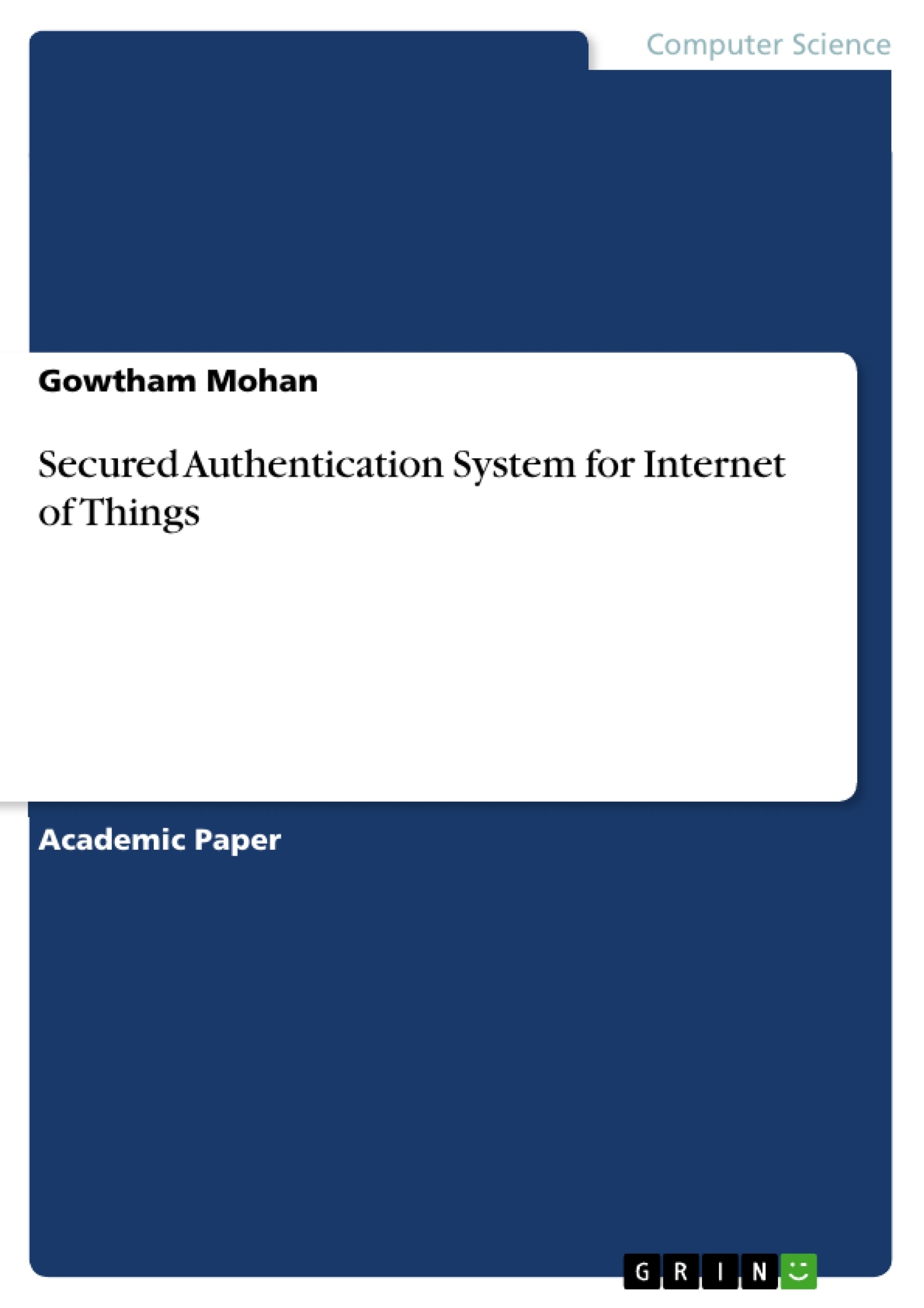The key objectives defined in this thesis are given as follows: To analyse the different security breaches in the IoT Ecosystem. To develop a lightweight cryptographic scheme for secured Authentication in IoT. To develop a multilevel security model by using Enhanced Cryptosystem for secured Authentication in IoT.
To ensure reliable and secure communication and access across multiple co-operatively communicating devices in IoT ecosystems ensuring optimal security and authentication system is must. Though, IoT demands ensuring security and authentication for both “device level security” and “data security under communication”. Noticeably, the device level security addresses attack resilience from any unwanted or unexpected intruder by applying certain authentication variables or key agreement policies. However, in the last few years, the events pertaining to smart card loss attack (SCLA), Brute-Force attack, impersonation attack, data sniffing attack etc., have questioned major at-hand security solutions. The irony is, in the majority of IoT systems, the access information or the key agreement information is saved or preserved onto the local memory, which often broadens the horizon for data loss, or attack. In such classical approaches the possibility of SCLA, Impersonation and Brute-force attack can’t be neglected. And therefore, ensuring both system level access authentication is inevitable. In other words, strengthening data security in IoT systems is equally significant like device level security and authentication. Once system considers both data level security as well as device level authentication system retaining quality of content and hardware efficiency becomes equally inevitable. On the other hand, maintaining efficacy of the security system with higher authentication correctness amongst the gateways and communication devices is must. It demands a collaborative low-cost or lightweight security model to enable security while maintaining IoT- expectations like low-computation, lightweight computation, low-power consumption, better data quality, attack resilience and fast in response. It can be considered as the key driving force behind this research.
Inhaltsverzeichnis (Table of Contents)
- Chapter-1
- Introduction
- 1.1 Background
- 1.2 Introduction
- 1.2.1 Internet of Things (IoT): An Overview
- Introduction
Zielsetzung und Themenschwerpunkte (Objectives and Key Themes)
This research aims to develop robust and efficient IoT security and authentication systems, specifically addressing the challenges of resource-constrained environments and increasing intrusion threats. The focus is on designing a lightweight encryption model that prioritizes low power consumption, low latency, and minimal data information losses.
- Security vulnerabilities in IoT ecosystems
- Resource-efficient authentication mechanisms
- Intrusion detection and mitigation in IoT databases
- Lightweight encryption for IoT security
- Quality of Service (QoS) considerations in IoT communication
Zusammenfassung der Kapitel (Chapter Summaries)
Chapter 1 provides an introduction to the Internet of Things (IoT) concept, highlighting its evolution, applications, security concerns, and challenges. It also outlines the research objectives, problem formulation, and thesis organization. This chapter explores the key research variables, including a comprehensive overview of IoT, its architecture, applications, modules, and the inherent security risks associated with it.
Schlüsselwörter (Keywords)
The key focus of this research lies in Internet of Things (IoT) security, authentication, intrusion detection, lightweight encryption, resource-constrained networks, wireless sensor networks (WSNs), and Quality of Service (QoS). The work aims to address the vulnerabilities and challenges related to securing IoT systems in diverse applications, with a special emphasis on minimizing resource consumption and optimizing performance.
- Citation du texte
- Gowtham Mohan (Auteur), 2024, Secured Authentication System for Internet of Things, Munich, GRIN Verlag, https://www.grin.com/document/1461421



